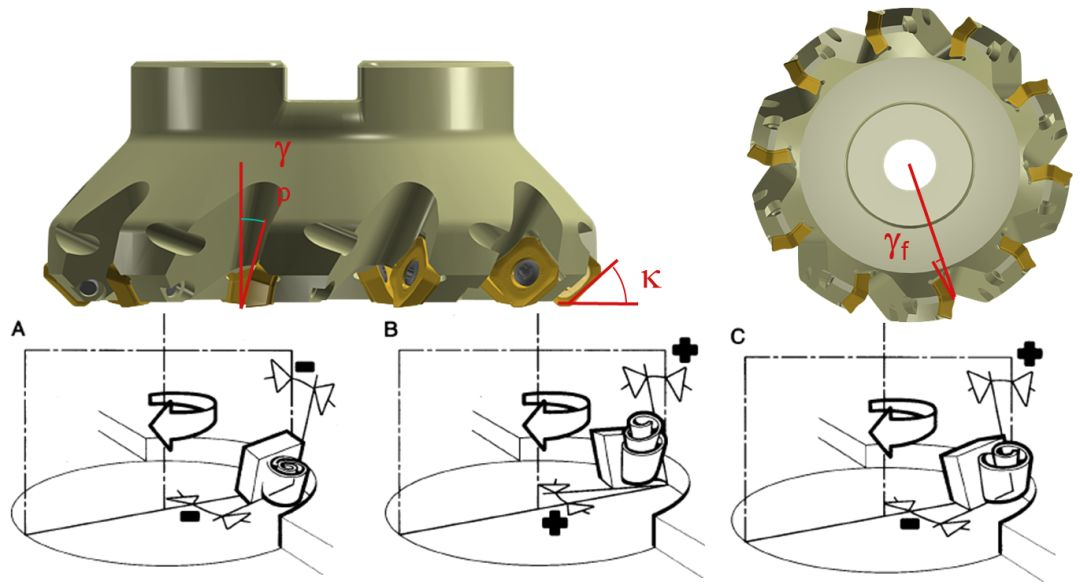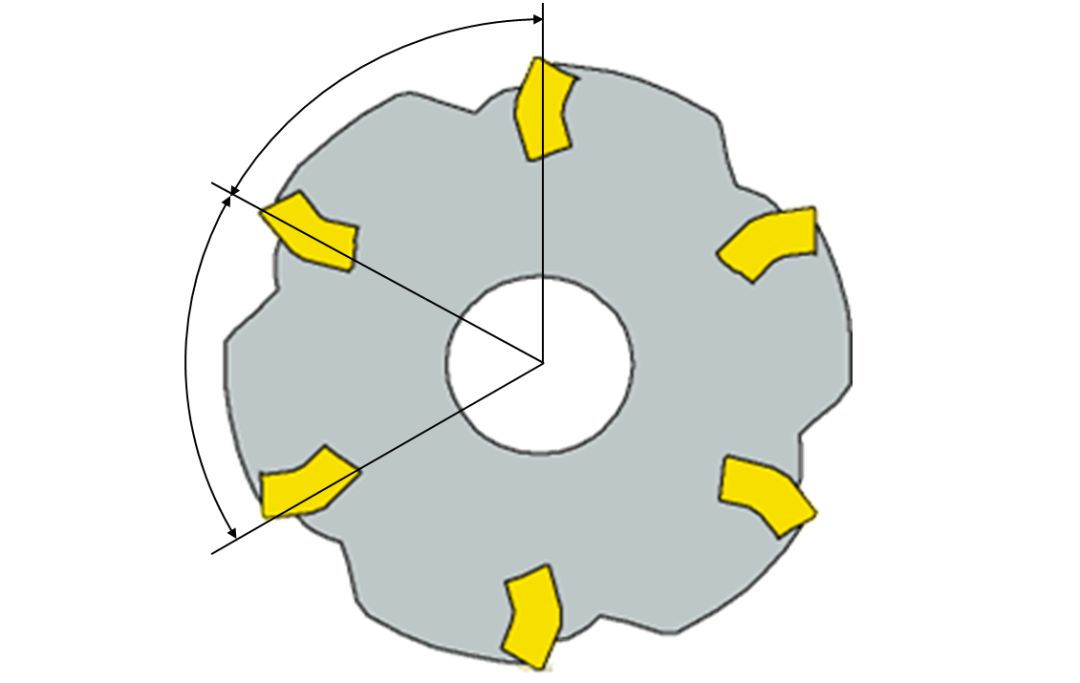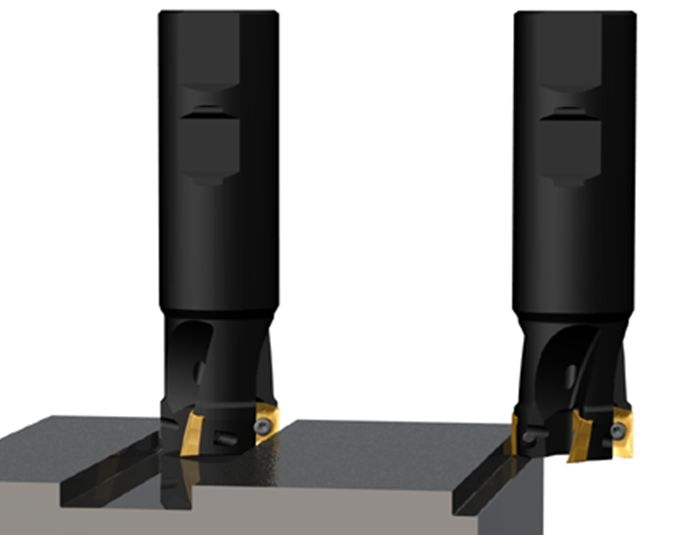Milling cutters are used a lot. Do you really understand the structure of milling cutters? Let’s find out through an article today.
1. Main geometric angles of indexable milling cutters
The milling cutter has a leading angle and two rake angles, one is called the axial rake angle and the other is called the radial rake angle.
The radial rake angle γf and the axial rake angle γp. The radial rake angle γf mainly affects the cutting power; the axial rake angle γp affects the formation of chips and the direction of the axial force. When γp is a positive value, the chips fly away from the machining process. noodle.
Rake angle (rake face contact surface)
Negative rake angle: for steel, steel alloys, stainless steel, cast iron.
Positive rake angle: used in viscous materials and some high-temperature alloys.
Center front corner: used for threading, grooving, profiling and forming knives.
Use negative rake angles whenever possible.
2. Milling cutter geometry
1. positive angle -positive angle
Cutting is light and smooth, but the cutting edge strength is poor. Suitable for processing soft materials and stainless steel, heat-resistant steel, ordinary steel and cast iron, etc. This form should be preferred when there are low-power machine tools, insufficient rigidity of the process system, and built-up edges.
Advantage:
+ smooth cutting
+ Smooth chip evacuation
+ good surface roughness
Disadvantages:
- Cutting edge strength
- Not conducive to cutting contact
- The workpiece is separated from the machine table
2. Negative angle – Negative angle
It has strong impact resistance and uses negative blades, suitable for rough milling of cast steel, cast iron and high-hardness, high-strength steel.
However, milling consumes a lot of power and requires excellent process system rigidity.
Advantage:
+ cutting edge strength
+ Productivity
+ Push the workpiece to the machine table
Disadvantages:
- Greater cutting force
- Chip blocking
Xinfa CNC tools have the characteristics of good quality and low price. For details, please visit:
CNC Tools Manufacturers – China CNC Tools Factory & Suppliers (xinfatools.com)
3. Positive angle – negative angle
The cutting edge has strong impact resistance and is sharp. Suitable for processing steel, cast steel and cast iron. The effect is also better when milling with large margins.
Advantage:
+ Smooth chip evacuation
+ favorable cutting forces
+Wide range of applications
4. Milling cutter pitch
1) Dense teeth: high-speed feed, large milling force, small chip space.
2) Standard teeth: conventional feed speed, milling force and chip space.
3) Coarse teeth: low-speed feed, small milling force, large chip space.
If the milling cutter is not equipped with a special wiper insert, the surface roughness depends on whether the feed per revolution exceeds the wiper plane width of the insert.
Example: Slot Milling & Contour Milling
Number of teeth:
•Sparse or standard teeth for slot milling (safety)
•Dense teeth for contour milling (productivity)
Post time: Nov-01-2023










